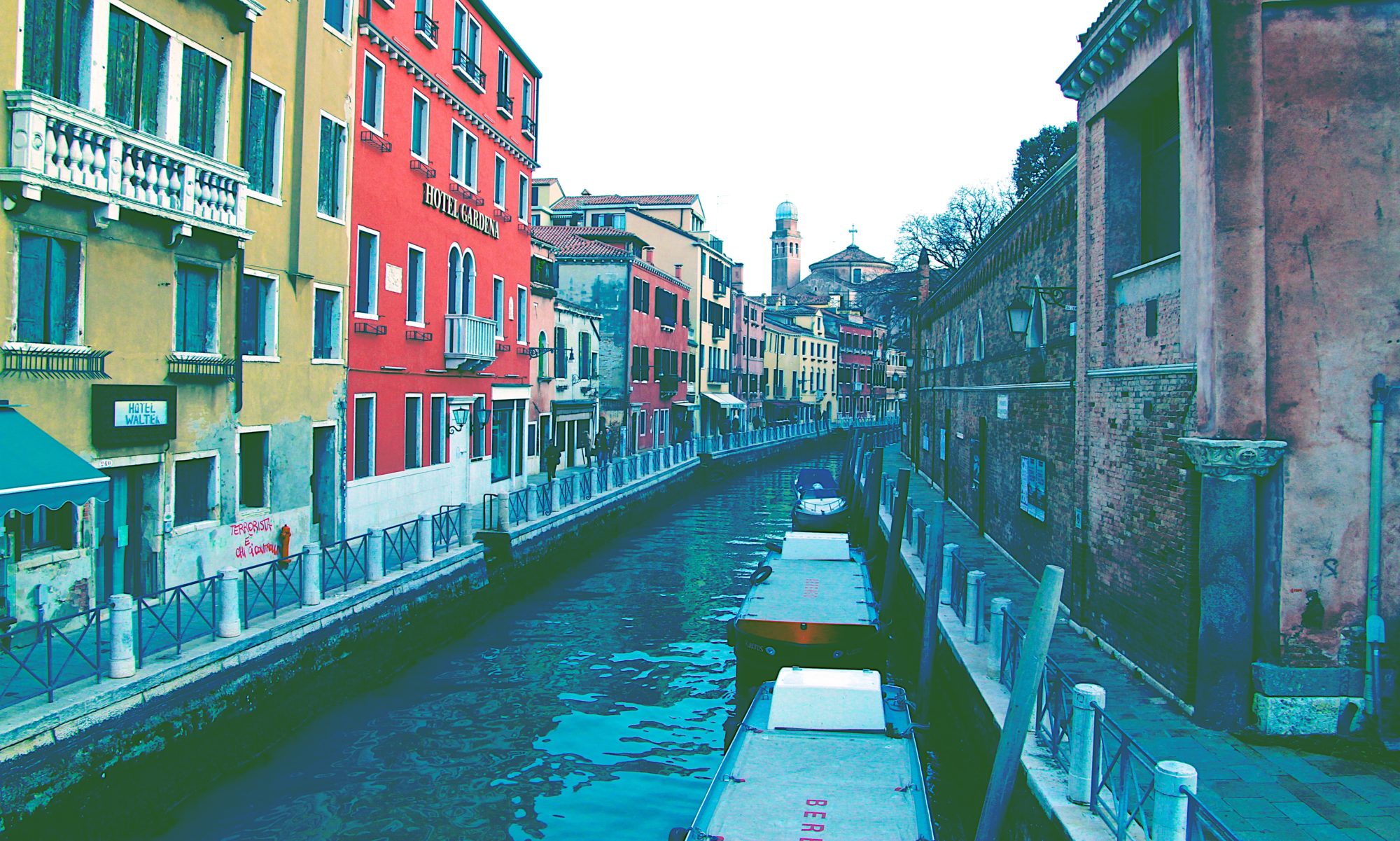 This month we decided to re-start our joyful collaboration with Venice in Pattern. As usual, we will try to link a special person (Massimo Scolari) to a place (ex Cotonificio Olcese) , telling a story of emotions.
This month we decided to re-start our joyful collaboration with Venice in Pattern. As usual, we will try to link a special person (Massimo Scolari) to a place (ex Cotonificio Olcese) , telling a story of emotions.
***
Personality: Massimo Scolari.
Place: Ex cotonificio Olcese (Dorsoduro).
***
It is somehow strange to start a new project in the last month of the year, usually already full of celebrations and nice, warm, family events.
However, this year, as we all know, is special and also the month of December seems strange and different compared to the previous year.
Hoping that things will improve soon, we would like to tell you the story of an old industrial establishment turned into a wonderful environment able to fly.
***
Cotonificio Olcese

Nowadays is hard to imagine the industrial past of Venice. The narrow streets, the general lack of space and the absence of vehicles seems all good reasons to hinder any serious business attempt related to heavy industries.
In fact, even now the mainland gathered all heavy industries.
(Un)fortunately, the business environment was quite different at the beginning of the industrial age and the islands of Venice began to be the centre of great and successful industries.
Among them, a cotton mill called “Cotonificio Olcese”.
In the late 1800s two Italian noblemen, Eugenio Cantoni and Carlo Moschini, started the construction of Cotonificio Olcese in the Sestiere Dorsoduro with the idea of establishing a cotton business in Venice.
They finalized the construction on 1883.
In 1916 the mill was bombed and partly destroyed by a fire. After the WWI the old building was finally rebuilt and the production started again.
The cotton mill was definitely closed at the beginning of 1960s following the general crisis of the industrial sector.
However, this was not the end of the Cotonificio.
Like a phoenix, it got a new life in the 90s, when it started to host the University of Architecture of Venice (Iuav) becoming a reference point for thousands of students.
Massimo Scolari

Massimo Scolari is an Italian worldwide famous architect born in 1943 and still living.
His name is linked to the city of Venice because he is the creator of “Le ali”, a masterpiece which decorates the outside of the Cotonificio.
This installation in laminated wood and steel was created at the invitation of Francesco Dal Co, director of the Architecture Section at the 1991 Biennale. The idea was to create an object that marked the entrance to the Corderie dell’Arsenale during the worldwide known Biennale of Venice.
After the exhibition the sculpture was placed on the roof of the Cotonificio and immediately Scolari’s sculpture has become one of the hallmarks of the Faculty of Architecture!
We would like to describe “Le ali” with the same words of its creator, freely translated below:
“Nothing else has always attracted me like flying, in a very quiet and enigmatic way. We can fall from the sky, but not rise up; we can float or dive, but we cannot soar in the air like the smallest of birds. The flights of Icarus and Simon Magus are historical examples of this inhuman aspiration; they skirt its technical impossibilities before falling into the laughter of the gods. But we can, however, fly over reality with our imagination, and giving wings to this imagination seemed a good omen for the schools of architecture.”
(“Nessuna altra cosa come il volo mi ha attratto da sempre in modo così silenzioso ed enigmatico. Possiamo cadere dal cielo, ma non innalzarci; possiamo galleggiare o immergerci, ma non possiamo librarci nell’aria come il più modesto dei volatili. I voli di Icaro e di Simon Mago punteggiano la storia di questa aspirazione disumana, ne costeggiano le impossibilità tecniche fino a cadere nel riso degli dei. Ma possiamo però volare sopra la nostra corporeità con l’immaginazione, e dare le ali a questa immaginazione mi sembrava di buon auspicio per le scuole di architettura.”)
Massimo Scolari


